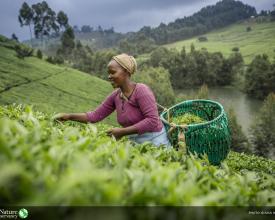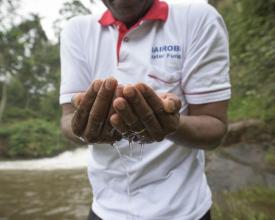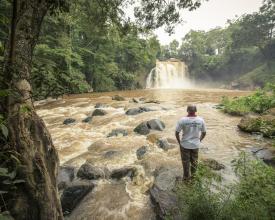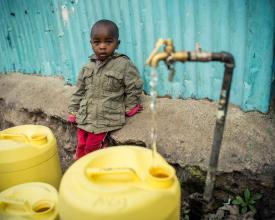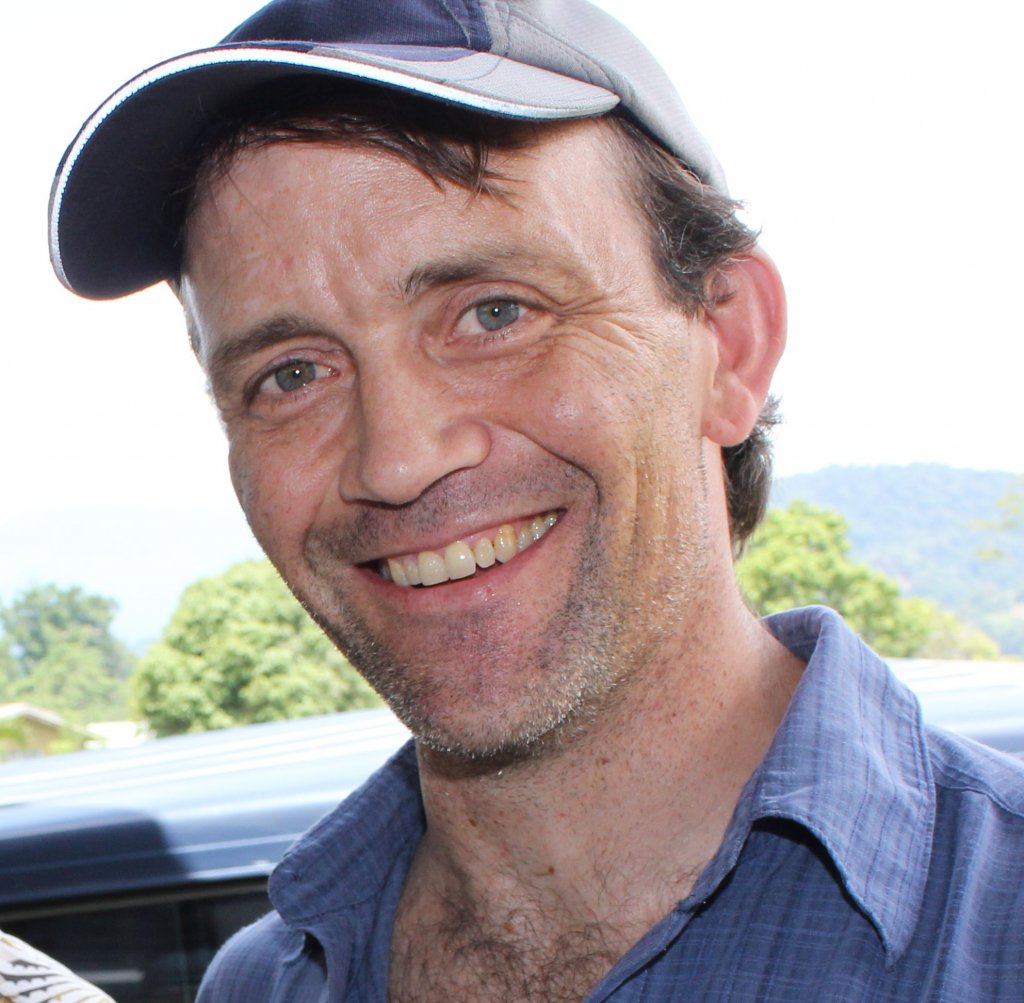
The Upper Tana-Nairobi Water Fund: Engaging business investment in Nature-based Solutions for water security
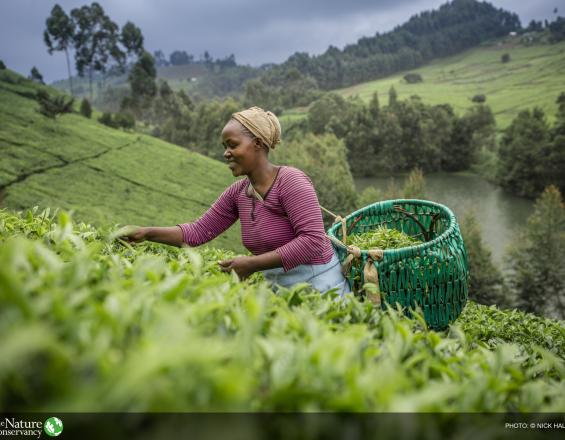
The Upper Tana River in Nairobi Kenya supplies 95 percent of the water for Nairobi’s 4 million residents, and for another 5 million people living in the watershed. It also provides half of the country’s hydropower output. Upstream, intensive farming practices of more than 300,000 small-scale farmers cause the soil to wash into the river downstream. Not only does this affect farm productivity and ecosystem health, but also causes costly damage to hydropower infrastructure and Nairobi’s water supply.
To tackle the problem, the Nature Conservancy and its partners developed the Upper-Tana Nairobi Water Fund, four years ago. This financial and collaboration mechanism gathers public, private, and civil actors to fund, implement and monitor improvements for a sustainable watershed management. Upstream, TNC works with farmers to apply soil and water conservation techniques to prevent runoff and save water; the benefits are felt at the upstream and the downstream level.
Impacts
The success of this solution rests on the identification of key beneficiaries and stakeholders, and the collaboration of stakeholders to design the Water Fund. Thanks to the Upper Tana-Nairobi Water Fund, 27 million more litres of water started flowing into Nairobi every day and, in the long term, reductions in the level of sediment in the river will improve the reliability and of Nairobi’s water supply. Perhaps most importantly, the Upper Tana-Nairobi Water Fund has given multiple stakeholders the opportunity to work collectively to manage and finance improvements in their shared water security.
